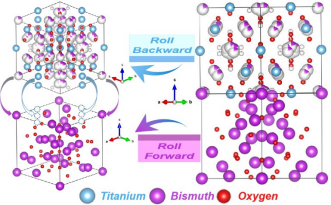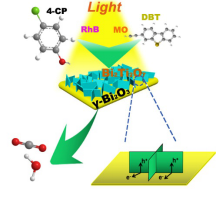我组关于'原位制备原子电荷转移路径构造具有分层结构的异质结光催化剂'的文章被Applied Catalysis B期刊接收并发表!
日期:2019.02.19
Title: In-situ fabrication of atomic charge transferring path for constructing heterojunction photocatalysts with hierarchical structure
DOI: 10.1016/j.apcatb.2019.02.050
Website: https://www.sciencedirect.com/science/article/pii/S0926337319301675
Abstract: The efficiencies of photocatalytic solar energy conversion systems are significantly limited by the challenging charge separation process, which can be improved via some commonly-used interfacial modulating strategies, e.g., introducing heterojunctions at the interfaces of different semiconductors. However, in many cases, the constructed heterojunctions not always work well mainly due to the serious mismatching of surface and energy structures between different components. In this study, inspired by the similarities in crystalline structures and elemental compositions, a novel heterojunction photocatalyst with hierarchical structure was first fabricated between bismuth-based semiconductors (Bi2Ti2O7 and gamma-Bi2O3) possessing identical cubic phase via a simple insitu transformation method. The resulted Bi2Ti2O7/gamma-Bi2O3 heterojunction photocatalyst (denoted as BT/gamma-Bi2O3) shows extremely high photocatalytic activities in photocatalytic removal of various high concentration environmental pollutants, e.g., phenol, dyes and sulfur containing compounds. An enhancement of more than two orders of magnitude in photocatalytic performances can be achieved for the BT/gamma-Bi2O3 photocatalyst than the single composite, which is possibly attributable to the co-sharing of Bi-O tetrahedra units for the composites in heterojunction structures to provide an atomic charge transferring pathway for facilitating the spatial charge separation. This work provides an effective strategy for rationally constructing charge separation and transfer pathway in semiconductor-based photocatalysts for solar energy conversion.
为了解决异质结光催化剂在催化过程中光生电荷跨越介面传递时易复合的问题,提高光生电荷跨越介面的传递效率是一个可选方案。我们提出,利用含有同种元素且结构相近的半导体,通过原位转化生长的方法构建异质结。这种异质结介面两侧由于具有相近的结构和元素组成,从而能够提供高效的电荷传递通道,有利于异质结中光生电荷的定向分离,进而提高其光催化活性。该工作由实验室硕士生刘东旭在李淳老师和张静教授的指导下完成。


